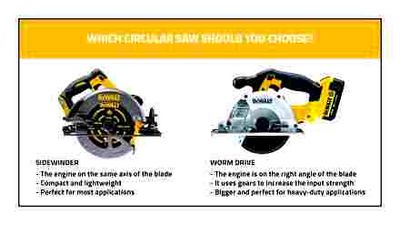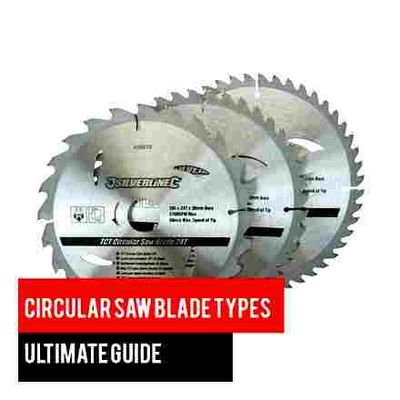Choose a circular saw blade
Circular saw blade marking
To determine the parameters of the proposed products, the manufacturer applies certain values to his products, which determine the outer diameter of the circle, the thickness of the solder and the circle. Among the most demanded discs for wood, one can single out products marked with 190×30 mm or 190×20 mm.
Purpose
Depending on the type of disc, the following can be processed:

- wood of various species;
- wood products. chipboard, OSB, plywood, laminated flooring and other similar materials;
- polymeric substances and products from them, for example, organic glass, polystyrene;
- natural stone material such as marble;
- soft metals. aluminum, copper alloys;
- products based on iron alloys. pipes, corrugated sheets, etc.
How to Choose the Right Circular Saw Blade
The cutting tool has certain characteristics, parameters, dimensions, purpose, properties of the material from which it is made.
Circular saw blade: choosing the right one
The circular saw blade is a tool for cutting various materials. It is an integral part, without which it is impossible to carry out any workpiece processing operations. Saw blades are used in stationary machines and hand-held cutting tools.
Features of the
With just one purchase of a powerful circular saw, the issue of using the tool for household and professional purposes does not end, since the device will need good consumables to complete the tasks. This applies to discs that will help to perform high-quality cutting or sawing wood and wood-containing materials. One circle for operating a circular saw will not be enough, since each type of cutting element has a specific function. Wood is considered a fairly popular raw material, which is used in many repair, industrial and construction works, therefore circular saw blades for wood can be used for different types of wood.
A distinctive feature of cut-off discs is also considered the ability to cope with cutting polymers, plexiglass and soft metals.
Circular saw blades differ in their performance, resource characteristics, as well as in the allowable number of regrinds. In addition, the discs can have different inner and outer diameters, as well as a different number and configuration of teeth. Maintenance of disks, as a rule, is carried out in specialized workshops; under normal conditions, these manipulations will be ineffective. It is worth noting that even the most durable saw wheel can be damaged if the tool is used for other purposes, therefore, during operation, work should be done only with the recommended type of raw material, in addition, thoroughly approach the issue of the intensity of use.
Teeth inclination
Most circular saw blades for wood are made with a positive inclination, which increases the quality of the longitudinal cut. With a negative tilt angle, the radius of the tooth will be directed towards the back of the disc. However, longitudinal types of cuts are most often performed by products with a positive deviation of the tooth from the radius, since such a configuration provides a more reliable grip of the raw material. Slope classification is based on the following principle:
- an angle of 5 to 15 degrees is considered the standard incisor arrangement;
- the positive slope is within 15–20 degrees;
- negative. from 0 to 5 degrees.
Based on these values, it will be easier to find the consumable for the job.
Circular saw blades for wood dimensions
Saw blade marking and decoding
All products currently in production, as a rule, display the manufacturer’s logo and brand. This is usually the largest and most catchy labeling element, which is only important to make it easier to remember the brand of the product you like.
Much more important information can be obtained from the rest of the marking elements. The main dimensions of the product in millimeters must be shown on the surface of the saw blades. for instance,
where 140 is the outer diameter of the circle, 2.5 is the thickness of the disc, 20 is the diameter of the bore.
The second mandatory value displayed on the product is the maximum speed at which the saw blade can be safely used. It is measured in revolutions per minute, which makes the shaft of the cutting tool when rotating. for instance,
Carbide
Carbide teeth are considered more reliable because they are stronger and do not require constant sharpening and patching. These scoring discs have the widest range of options and help you save time thanks to their reliability. However, a significant drawback is the large number of low-grade fakes, even of famous brands. In such a product, the soldered ends quickly fly off. After 5 minutes of cutting the cross cuts, only a few remaining blades on the disc can be seen.

But counterfeit can also be successfully combated if you pay closer attention to the correct spelling of the brand, as well as the high quality and durability of the paint with which the marking is made.
Features and selection of circular saw blades
- What are we for?
- Main settings
- Views
- Monolithic
- Carbide
- How to choose?
- How to replace a disk?
When the word “saw”, most people who independently carry out repair work around the house have an image of a hacksaw. And this is true, because such works once began with her. However, progress has made great strides forward, and now the best assistant in repairs is the circular electric saw. It significantly reduces labor costs and increases the speed of work. With this tool, you can cut various surfaces and materials.
But for its functioning, nozzles are vital, without which cutting is impossible. These attachments are called saw blades.
What are we for?
Saw blades are used for cutting various materials. They will help you to cut:
- steel;
- soft metals;
- wood;
- Fiberboard, chipboard;
- plastic.
There are also circular saw cutters. With the help of such a disk, you can cut grooves or other types of grooves of the required size in any material. These fixtures make any repair quick and easy. The range of woodwork performed with circular saws and discs is extensive and in demand. After all, with a saw blade you can cut material of any size and shape.
Thanks to the electric motor and high power, the tool with a cutting disc can perform the necessary work for a rather long time. However, for the rational use of time and effort, it is necessary to take into account the features of the operation of this unit.
The most important indicator of a quality application is the correct choice of the saw blade. To do this, you need to know the basic properties, types of this nozzle and the rules for its use with various materials.
Main settings
Consider the most important characteristics of the discs, which will allow you to choose the necessary attachment from a huge modern assortment.
- Manufacturing company. Manufacturers of such attachments are often specialized tool manufacturing enterprises. Therefore, firms may pay less attention to the quality of components, focusing on technology. But the same cannot be said about well-promoted brands, such as Bosch or Makita, which not only value their reputation, but also have the opportunity to use better quality raw materials and modern processing technologies. Therefore, one of the main parameters of saw blades and milling cutters is the brand.
- The next important parameter that determines the capabilities of the sawing nozzle is the size of the circle, or rather, its outer and landing diameter. When evaluating this criterion, you need to worry about the calculations in advance and clarify the required cutting depth, which will become the measure of the outer diameter. But when choosing, it is also necessary to remember about the size of the tool and its protective casing. These dimensions can make it impossible to install a large diameter disc, since removing the protection is unsafe and not always possible.
The rim must be identical to the size of the shaft. This is necessary for the correct operation of the equipment and the absence of overheating of the circular saw motor.
This is possible if the inner diameter of the disc is larger than the circumference of the shaft. Indeed, after attaching the disc, it will create an imbalance in the tool and, as a result, a high level of vibration. Depending on the tool model, the diameter can range from 16 to 32 mm.
- The number of teeth plays an important role in the quality and precision of the cut, since it determines the number of cutting edges. The more of them, the clearer the line was cut. Such nozzles are available with a large (about 90 pcs.), Medium (40-80 pcs.) And small (up to 40 pcs.) Number of teeth.
Medium discs can rightfully be called universal. They can cut almost any material both horizontally and vertically. Both hard and soft types of materials lend themselves to cutting.
- When considering saw blades, you can also highlight such criteria as the shape and angle of inclination of the tooth. The first is responsible for the ability to cut a particular material, and the second. for the type of cut. So, it is easier to perform longitudinal cuts with a disc with a positive slope of 15 to 20 degrees, and it is better to cut dense materials with a nozzle with a negative slope of 0 to 5 degrees. There is also a standard incline type, which is considered universal.
- As for the teeth of the disc, they can be universal, flat, replaceable, have the form of a trapezoid or an increased inclination. It is good to use a disc with a flat cutter to make side cuts in hard types of wood, with a replaceable one. to cut softer types of wood and fiberboard. Trapezoidal teeth cut soft materials such as plastic cleanly.

The teeth with an increasing slope are used for products that can easily split during operation. Universal ones are used in almost any case. They are great for occasional non-specialist home use.
- And the last important criterion is the thickness of the product. It depends on it how wide the cut will be. The wider it is, the more material is lost in the process. The thinner the disc, the more it is susceptible to deformation and overheating.
Choosing Circular Saw Blades. Ace Hardware
All of the above technical characteristics of the saw blade are indicated on it. Typically, the marking is performed in the form of appropriate, intuitive user-friendly pictures with the necessary numerical data.
Saw blades are divided into two types: carbide and monolithic. This division describes a difference that is immediately apparent. The fact is that on some discs the cutting part is soldered to the teeth, and some are simply a single product (monolith).
Monolithic
A distinctive feature of monolithic discs is the large number of teeth. Working with such a blade, it is much easier to get a clean cut. But it is worth noting the poor ability of these cutting wheels to keep sharpening and the need for periodic divorcing of the teeth.
Sharpening metal is not difficult, but a large number of blades slows down the process.
How to choose?
In order to make the right choice, when buying a disc, you must take into account:
- circular saw specifications;
- all markings;
- the appearance of the teeth;
- type of disc;
- type of material for sawing.
In order not to be mistaken when choosing a saw blade, it is necessary to take into account not only the correspondence of the size of the blade and the protection of the tool. The power of this unit is also important, as well as the tendency to overheat. The speed of work and the number of stops to cool the saw depend on these parameters.
Disc marking will give the most comprehensive information about its properties and capabilities.
Another criterion that can directly indicate the quality of the product is the number of teeth. The more of them, the higher the quality of the cut. Discs with sparse teeth can do most of the roughing work, but at a much higher speed. Therefore, you need to correctly evaluate the desired result.
When making an independent choice without the help of a sales assistant, it is important not to confuse products for pendulum saws and circular saws. Such circles can only be distinguished by the type of inclination of the teeth. Discs with a neutral and negative tilt do not grip the material well, they clog quickly and do not make the necessary cut. In this case, the force of the motor can lead to overheating. For a circular saw, blades with an aggressive positive angle of inclination are more suitable, if the sawing product does not dictate otherwise.
Consider special cases of using saw blades.
- Straight-toothed accessory selectable for rough woodworking.
- For saws for concrete and DSP (cement particle board), use a nozzle with flat teeth and chamfers, since they easily tolerate falling into the grooves of concrete or nails.
- For work on laminate and chipboard, a disc with a series of concave triangular teeth is perfect. It will help you make the cut without prior marking.
- For soft metals such as aluminum, a circle with alternating trapezoidal and flat teeth will work best.
- When working on plywood and MDF, it is better to use a universal nozzle.
- As for heavy decor, a diamond wheel must be used for manual cutting on materials such as stone.
How to replace a disk?
When repairing, as a rule, several types of materials are used, which require not only cutting, but also milling. And different products need different attachments.
This moment leads to the need to replace the wheel with a cutter.
- In order to perform this operation, you must first make sure that the device is disconnected from the mains. This point is critical to avoid serious injury. When replacing a circle, even an experienced craftsman can accidentally press the start button, and the health consequences will be dire. Therefore, when working with cutting electrical units, it is necessary to strictly observe all the rules of safe work.
- Next, you need to prepare a hexagon. It unscrews almost all the bolts on circular saws, both foreign and domestic. Using this key, you need to unscrew the fastening bolt of the protective plastic casing, turn the guard up and tighten it again, but you can not tighten it tight.
- Next, you need to insert the hexagon into the mounting bolt of the shaft on one side, and on the other, press the lock button of the same shaft. Then the bolt must be unscrewed, remove the washer-stopper and the disk behind it. It must be changed to a cutter and all the steps must be done again, only in the reverse order. First, a washer is placed on the nozzle, then the bolt in the center is manually screwed in and the structure is clamped with a hexagon when the shaft lock is pressed.
After fixing the cutter, you need to check the reliability of the fastening by small longitudinal staggering of the nozzle. If everything is securely fixed, then you can continue to work.
Thus, when choosing an attachment for a circular saw, it is necessary to start from the quality and properties of the material for cutting, as well as the technical characteristics of the saw and the saw blade itself. For low-power, mostly hand-held circular saws, you should not choose blades with too many teeth. This can lead to overheating of the engine and costly repairs.